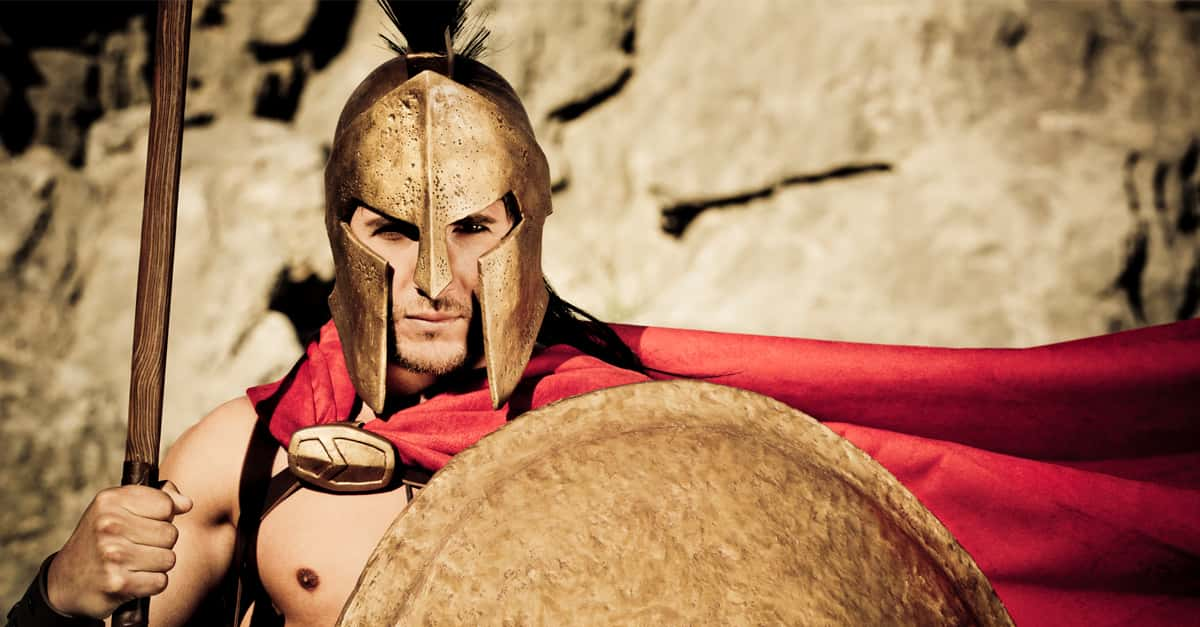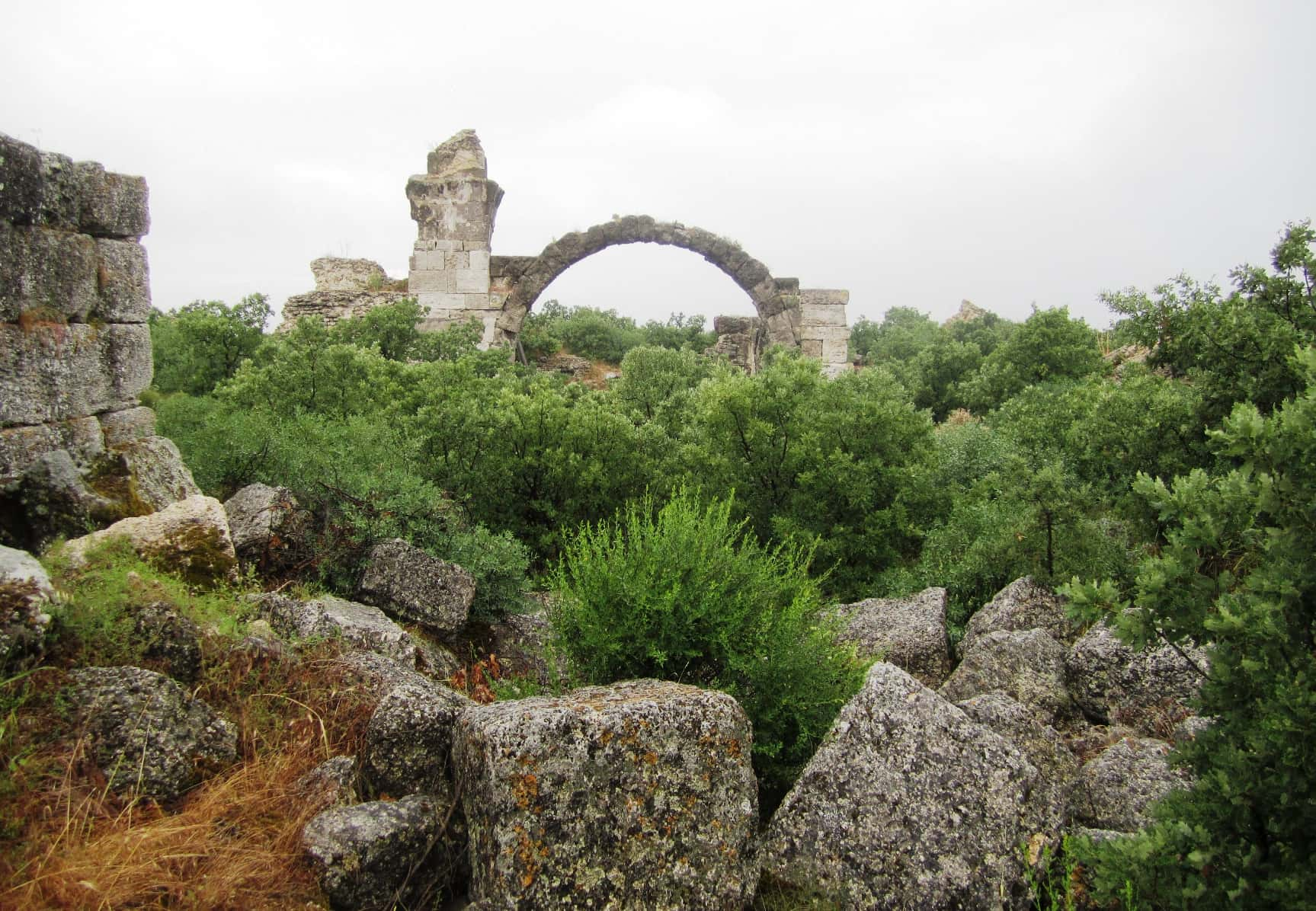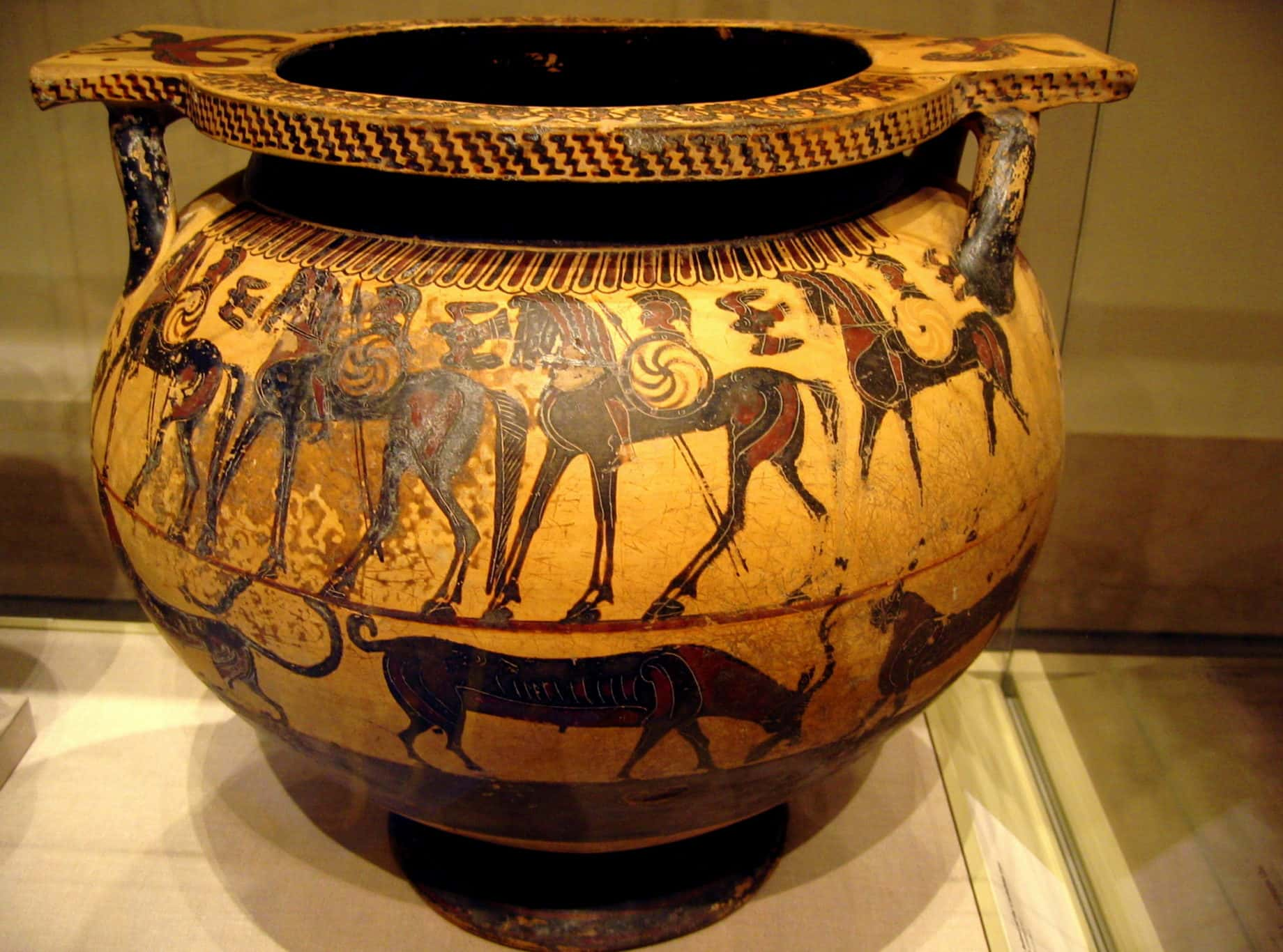For centuries, readers have been thrilled by tales of the Trojan Conflict in Homer's Iliad and Odyssey. The exploits of Achilles, Odysseus, Hector, and the other heroes are exciting, but they're acknowledged today as legends, and it can be hard to separate history from myth. But in modern times, archaeologists and historians are uncovering more and more information about Greece and the Near East during the Bronze Age, the era in which the combat is believed to have occurred, if it occurred at all. Researchers have even found what they think could be the actual city of Troy, opening up the question: which parts of the story were legends, and which might actually have happened? Could the remains of a giant wooden horse be far behind? We don't have all the answers yet, but for now here are some legendary facts about the story of Trojan conflict and the history it may have been based on.
1. Beauty Pageant
According to the Iliad, the Trojan War began when the Trojan prince Paris ran away to Troy with Helen, wife of the Spartan king Menelaus. Paris had been chosen to judge which Greek goddess was the most beautiful. Aphrodite told him that were he to select her, she would give him the love of the most beautiful woman on earth. He did so, and the love goddess made Helen fall in love with him, igniting the conflict and giving her the name "the face that launched a thousand ships."

2. You and What Navy?
Encouraged by his hawkish brother Agamemnon, the king of Mycenae, Menelaus declared conflict on Troy, recruiting allies from the surrounding Greek city states. They had no trouble getting help: listing the Greek’s allies takes up a whole chapter of the Iliad. All told, the fleet that sailed to Troy contained 1,186 ships.
3. Legendary Roster
Menelaus’ allies came from the various small kingdoms of Greece, and they included some of the most famous heroes of Greek myth: Ajax, Achilles, Castor and Pollux, Odysseus…the list goes on. Homer used the term “Achaeans” to demonstrate a pan-Greek alliance, even though only a few had ties to the specific kingdom of Achaea.
4. The Millihelen
“I’m worried our Achilles’ heel could be susceptible to a Trojan horse.” The Trojan conflict has given us dozens of phrases we use and hear every day, but have you heard of the term "millihelen?” This tongue-in-cheek unit of measurement was allegedly created by a Cambridge professor named W. A. H. Rushton, and it refers to the amount of beauty required to launch 1,000 ships.
5. Troy Units
In response, writer Edgar J. Westbury proposed that -1 millihelen was the amount of ugliness required to sink a ship.
6. Calling All Allies
The Achaean forces had many neighboring kingdoms to rely on in their conflict against Troy, and they were certainly an intimidating army. The Trojans, however, were not without allies of their own. Lycia, Phrygia, and other nearly a dozen more states came to Troy’s aid.
7. The Mutiny
At one point during the long conflict, the Achaean army men threatened mutiny and attempted to return to Greece. The story, alluded to in the Iliad, is told in much greater detail in another work called the Cypria. That poem, by the Greek poet Stasinus, was not nearly as popular as the Iliad and is now lost to history.
 Wikimedia Commons, Pete unseth
Wikimedia Commons, Pete unseth
8. I Just Wanna Go Home!
The Trojan Epic Cycle refers to several poems, not just the Iliad and the Odyssey, that cover the details of the conflict from Paris and Helen’s escape from Sparta to Odysseus’ arrival home in Ithaca. According to the cycle, the events of the conflict lasted around 30 years, which is saying something—the average life expectancy during the Bronze Age is estimated to be just 26 years.
9. Aftermath
According to the legends, the Trojan War ended with the defeat of the Trojans and the sacking of Troy. The victorious Achaeans returned home, with Helen returning to Sparta to spend the rest of her days with Menelaus. Another story, the Aeneid, has the survivors of Troy, led by the hero Aeneas, traveling to Italy and becoming the ancestors of the Romans.
10. Seriously Epic
Homer's epic poem the Iliad is by far the most well known and influential account of the conflict. The epic was probably written in the 8th century BC (although very little is known about the life of the actual Homer so it is hard to say for sure). The name comes from the region around the city of Troy which was known to the Greeks as Ilios or Ilium.
11. Check Your Sources
There is no mention of a Trojan Horse in the Iliad.
Interestingly, there is also no mention of the color blue.
12. Pobody’s Nerfect
Since the Iliad was passed down through the years by oral tradition (meaning it was spoken aloud, not written down), no one can say for sure exactly how it was when Homer first wrote it, but it was likely not made using modern historical methods. As we’ve gained a better understanding of both Homer’s time and the Bronze Age when Trojan Conflict would likely have taken place, scholars have been able to point out many anachronisms in the poem. These include the use of iron tools and painted shields, the use of chariots merely as vehicles to and from the battlefield, and the cremation of the gone, none of which were regularly practiced by Mycenaean Greeks of the Bronze Age.
13. Famous Landmark
Despite the inconsistencies in Homer’s story, he did have a sense of Troy as a very real place. Homer lived just 400 years after the Trojan Coflict was set, and the ruins of Troy were still visible in his time.
14. Paying His Respects
Though today most of the Iliad is considered mythical, the poem was very real history to the Ancient Greeks. Alexander the Great, for example, passed by the site of Troy in 334 BC and offered sacrifices at monuments dedicated to Achilles and Patroclus.
15. That Could Be Anyone’s Tomb!
The name “Achilles” was fairly common during the Bronze Age and even more so during the Classical period. Tablets found at Knossos on Crete and Pylos in the Peloponnese both mention shepherds named Achilles, while a stele (an ancient, stone monument) found at Halicarnassus in Ionia (the west coast of modern Turkey) depicts a female warrior named Achillia.
16. Epic Odyssey
Homer wrote the Odyssey as a quasi-sequel to the Iliad. The Odyssey follows Odysseus, one of the Greek heroes in the Trojan conflict, as he is forced to overcome tremendous challenges while he attempts to sail home to Ithaca after the conflict. It was actually the Odyssey, not the Iliad, which tells the story of the Trojan Horse and the sack of Troy.
17. Homer Hogging the Glory
The two Homeric epics are only part of the Trojan Epic Cycle—other poets covered the topic as well, though their poems have mostly been lost. In addition to the aforementioned Cypria, there is the Iliupersis, which recounts the sack of Troy, and the Nostoi, which describes the homecomings of all the Greek warriors. By the end of the latter poem, every living Greek warrior has returned home except Odysseus, leaving a pretty good premise for Homer to work with.
18. You Can't All Be Trojans
While not part of the Epic Cycle, Virgil's Aenied is still very widely read, and unlike many of the poems in the Epic Cycle, it was not lost to history. It recounts the escape of Aeneas and his followers from Troy, through Carthage, and eventually into Rome where they founded what would become the Roman Empire. Though it is almost certainly not historical—it even contradicts other myths of the founding of Rome—the Aeneid did kick off a trend of other European nations trying to trace their roots to Troy. There are even texts linking the Norsemen to Greek and Trojan warriors.
19. Backtracking In Verse
The Trojan War led to the creation of a whole genre of poetry. A palinode is a poetic apology in which the author retracts statements made in an earlier poem. In the original Palinode, the Greek poet Stesichoros apologizes for the damage he and other poets had inflicted on the reputations of Aphrodite and Helen when they said that the entire conflict was their fault. In the poem, Stesichoros wrote some revisionist history and says that Helen had in fact never left Sparta at all. Instead, Aphrodite spirited her away to Egypt for the duration of the Conflict , leaving a doppelgänger in her place at Troy.
20. Just Like Us
Archaeologists have been able to piece together a little about Trojan culture. No foundries were found there, but the Trojans did have access to bronze and iron through trading (they were expert potters, and specialized in a unique purple dye). They also kept dogs and cats as pets—Trojans, they’re just like us. They like animals, purple stuff, pottery and trading for bronze.
21. Suspension of Belief
Dio Chrysotom concludes his rebuttal to Homer by admitting that he doesn’t expect anyone to believe him because Homer’s story is more exciting. But there is one fact of Homer’s account which Dio Chrysotom thinks should make anyone question Homer’s account. He writes, in utter exasperation, “A whole army was hidden in a horse and yet not a single Trojan noticed it?” You have to admit, that’s a pretty fair question.
22. Siege Food
There were many reasons for scholars throughout the ages to doubt the historicity of the Trojan War. The horse thing, for example, or the frequent interventions by Greek gods and goddesses. However, there were more practical questions as well, but ones that may actually have answers. For example, how did a single walled city survive a ten-year siege? Well, for one thing, Troy was never fully besieged—citizens could come and go as they pleased. And some historians have since pointed out the Trojan propensity for dried fruits, as well as fermented milk products like cheese. It mightn’t have lasted them ten years, but the Trojan’s diet was one well-suited to scarcity.
23. Uncovering a Myth
While for years most scholars dismissed Troy as a myth, some adventurers and archaeologists continued to look for the city. In 1870, a German businessman and archaeologist named Heinrich Schliemann began excavating at a site in modern-day Turkey called Hisarlik. After digging down through nine distinct archaeological layers he found a city with a pair of massive gates, gates that would fit some famously impenetrable walls. Later geographic analysis proved that the site at Hisarlik was virtually identical to what we know of the historical Troy.
24. Missing Treasures
Among the treasures at the site, which came to be known as Troy II, was a hoard named Priam’s Treasure after the Trojan king. It included vases, shields, ax heads, and other priceless artifacts. Schliemann sent the treasure back to Germany, but it went missing at the end of the second World W. Priam’s Treasure was presumed lost until it turned up at a Russian museum in 1993.
25. Date With Destiny
Schliemann believed he was fated to discover Troy. In fact, he has claimed that he was only eight years old when he declared he would be the one to find the legendary city. Because if you can believe it, you can achieve it.
26. Credit Hog
Schliemann was not quite the archaeologist he claimed to be; he had spent years looking for Troy unsuccessfully. In fact, he might never have found Troy at all if not for Frank Calvert, a British diplomat and amateur archaeologist who had been hunting for Troy for years. It was Calvert who placed Troy at Hisarlik but, due to his amateur background, had a hard time getting Schliemann to share credit.
27. Right in My Backyard
Calvert insisted that the real Troy was at Hisarlik, but Schliemann had every right to be skeptical: the hill Calvert cited as evidence was conveniently located on farmland owned by Calvert himself. In 1996, Calvert’s descendants tried to sue for ownership of Troy and the artifacts found there, but they were unsuccessful.
28. Close Call
Early explorers were painfully close to finding the real Troy. Pierre Belon and Pietro Della Valle, two sixteenth-century explorers, argued that the legendary Troy was based on a town called Alexandria Troas, just 20 kilometers south of Schliemann’s dig.
29. Fed Up
In the late 13th century BC, Walmu, the king of Wilusa, was deposed. Records of the event are scarce, but there is some suggestion that it was the Wilusan’s frustration with ongoing conflict against the Greeks that led to him being overthrown.
30. Not So Fast
While the Hisarlik site seemed like a perfect fit for Troy, some archaeologists have cautioned that the existence of this city in Anatolia did not necessarily mean the mythical conflict was a real event. In 1954, scholar Moses Finley looked at five key events from the Iliad as proof that the Conflict did not occur. In the poem, Troy was destroyed by combat, it was destroyed specifically by Greeks, the Greeks were led by Agamemnon, Agamemnon was recognized as chief of the Greek allies, and Troy also had many allies themselves. Finley felt that, despite the fact they had likely found the site of Troy, there was little to no proof that any of these things were accurate, disproving the likelihood of the Conflict ever happening.
31. By The Letter
Contrary to Finley's points, one artifact found outside of Troy suggests the Trojan War may indeed have been a real event. The Tawagalawa Letter was written by the king of the Hittites, who were almost certainly the historical analog of the Trojans, to the king of "Ahhiyawa," which is today believed to be the Hittite name for Bronze Age Greece. The Tawagalawa letter was written around 1250 BC, around the time the conflict would have taken place.
32. Call A Truce
In the Tawagalawa Letter, the author specifically refers to a past event that he refers to as the "Wilusa episode" that involved hostilities on the part of the Ahhiyawan king. Wilusa is widely believed to have been the Hittite word for Troy (and the source of the word Iliad—Wilusa, Wilion, Ilion, Iliad). Unlike Homer, however, the Tawagalawa Letter doesn’t refer to a great victory over the Trojans by Greeks, but suggests a truce instead. The author merely states, “we’ve come to an agreement.”
33. Coincidences Start To Pile Up
Another Hittite document shows that the Hittite king Muwatalli II had signed a treaty with the king of Wilusa around 1280 BC. The king of Wilusa would have been relatively old, having already signed a previous treaty with Muwatalli I. That king’s name, Alexandu, is tantalizingly close to “Alexandros of Ilios,” a name sometimes applied to Paris in the Epic Cycle.
34. Conflict All the Time
While the Tawagalawa Letter seems to confirm a conflict between Ahhiyawa and Wilusa, it doesn’t necessarily confirm that the Iliad was based on a single combat. Historians now believe that the Trojan War might be a composite of many battles in Troy. Just as there were many Troys, it seems there were as many as four Trojan Wars.
35. Natural Disasters
The distinct layers which make up the Troy site speak to a history of destruction. Each time Troy was destroyed, it would be rebuilt on the same spot. This left archaeological remains in several layers at the same site, but not all of these layers indicate that destruction was the result of a combat. Troy II was destroyed by a fire, while Troy VI was probably destroyed by an earthquake.
36. The Walls
Troy VI also featured some massive fortifications around the city, complete with towers. There was also a 270,000 square meter "lower city" surrounded by a ditch dug directly into rock. Not only does this suggest some ongoing hostilities with other nations, but it could corroborate Homer’s allusions to Troy’s massive walls, so great they were said to have been built by Apollo and Poseidon themselves.
37. The Real Deal
Troy VIIa is probably the closest analog to the Troy of the Epic Cycle. Troy VIIa dates from 1300-1250 BC, roughly the time of the Tawagalawa Letter. Here, archaeologists have found evidence of fire, skeletons with trauma and bronze arrowheads, all pointing toward a violent conflict at the site. Later artifacts also show an increasing Greek influence in the area.
38. Rebel Rebel
The tensions which likely led to the outbreak of armed conflict started early. As early as the 15th century BC, 22 confederated Anatolian states called the Assuwa League had pitched rebellions against Wilusa and their Hittite allies. Hittite literature from the time suggests that the Assuwa League had the support of Ahhiwaya (Mycenaean Greece).
39. Troys on Troys on Troys
Schliemann’s dig suggested not only that there was a real Troy, but there were in fact many Troys. The city was destroyed continuously through fires, sieges, and other disasters. Each time, the Trojans rebuilt on the same site. Troy was named a UNESCO World Heritage Site in 1998.
40. Strong Words
The first-century Greek historian Dio Chrysostom, an apparent skeptic of Greek patriotism, argued that the Trojan War was a real event, but the Trojans, in fact, had won. In his “Eleventh Discourse,” Dio Chrysostom accuses Homer of deliberately misleading the Greek people and says “whatever [the Greeks] delight to hear from anyone’s lips they at once declare to be true.”
41. The Trojan Ram
As Dio Chrysotom pointed out, even in ancient times, the idea of a giant horse smuggling Greek army men into a city sounds pretty far-fetched. Scholars have tried to explain away the idea by suggesting that the Trojan Horse might have just been a poetic way of describing a battering ram the Greeks might have used to breach Troy's massive, fortified gates.
Sources: 1, 2, 3, 4, 5, 6, 7, 8, 9, 10, 11, 12, 13, 14, 15, 16, 17, 18, 19, 20, 21, 22, 23, 24, 25, 26, 27, 28, 29, 30














































